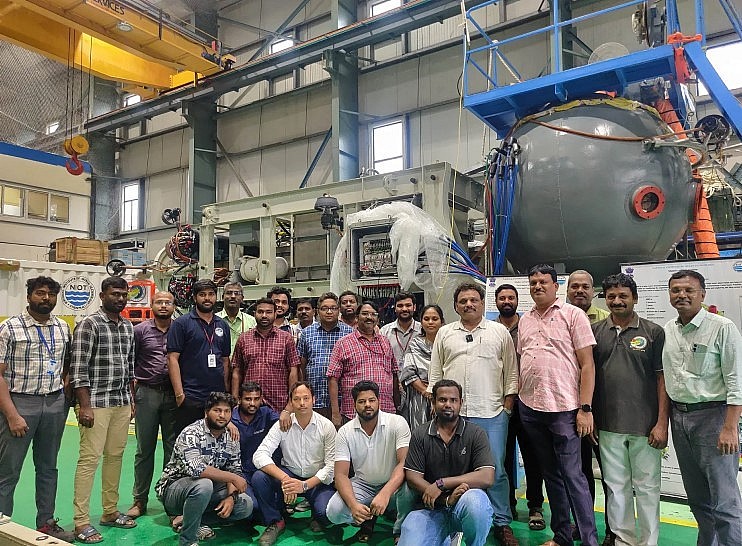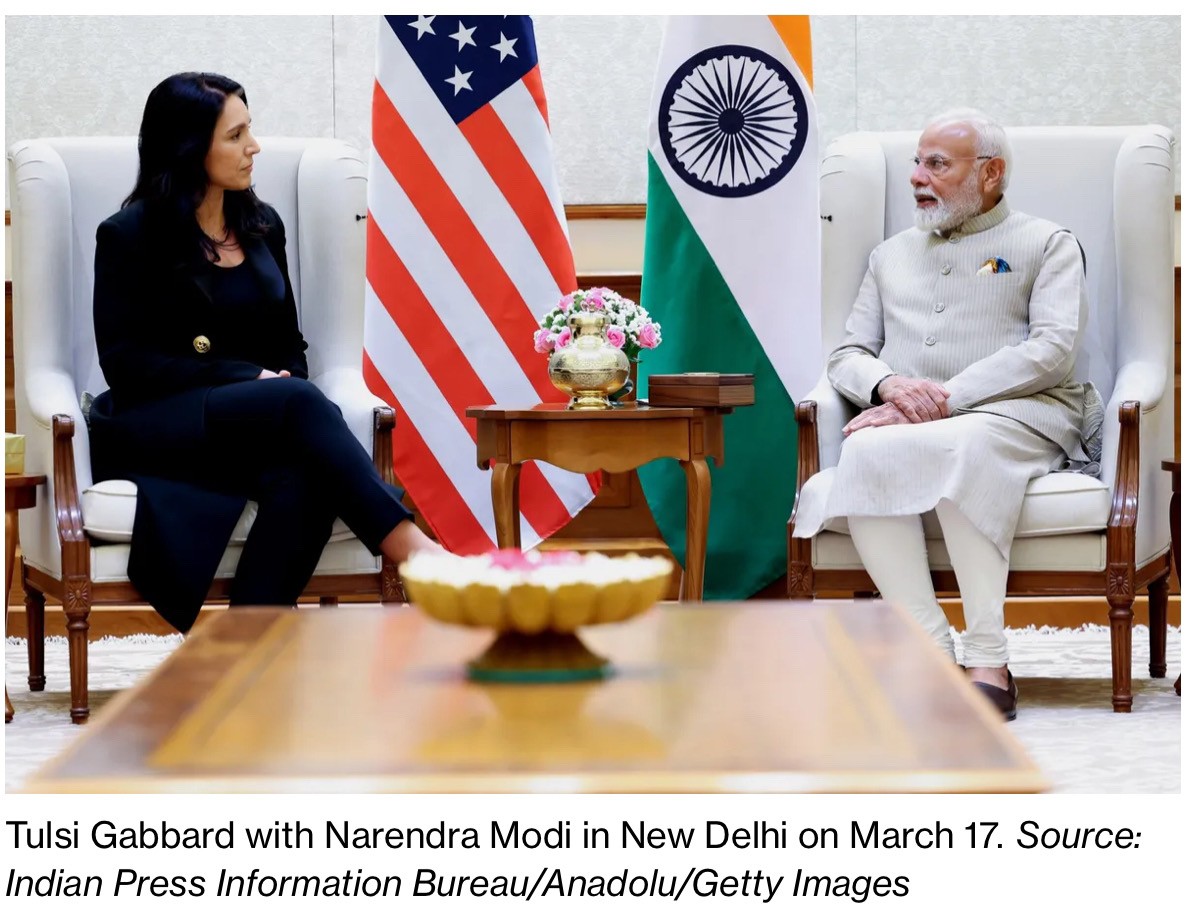India’s first crewed deep-sea mission set for testing—‘We’re to oceans what ISRO is to space’
 |
| The Matsya 6000 submersible will be taken to the open sea for testing with a crew on board in January 2025 | Akanksha Mishra, ThePrint |
Ramesh Raju’s New Year plans involve spending two hours underwater in a titanium-cased chamber that’s barely seven feet long. The scientist with the National Institute of Ocean Technology in Chennai is in line to be a pilot for India’s first crewed underwater mission, Samudrayaan.
Raju and 10 other scientists from NIOT have spent three years preparing for Samudrayaan, and are gearing up for their litmus test. Early next week, the 28-tonne vehicle will be tried in a harbour off Chennai with three crew members on board. And if all goes as planned, in 2026 – the same year that ISRO will launch a manned space mission – NIOT will send a crew 6,000 metres under the Indian Ocean.
“What ISRO is for space, NIOT is for the oceans,” said Dr Vedachalam N, the Project Director of Matsya 6000, the submersible that will take Raju and two other crew members to the depths of the ocean.
It’s not the claustrophobia that worries Raju. He’s more nervous about the fact that this will be the first time the submersible he has worked on for three years will be taken to the open sea for testing with a crew on board. If anything goes wrong in the harbour test, the deadlines for the other tests and the eventual launch will get pushed back, said Raju. There’s a lot riding on its success–from prestige to knowledge.
Once successful, the Samudrayaan Mission will grant India a place in the elite league of countries that have sent humans beyond 4,500 metres into the ocean. It will herald a new chapter in deep-sea mineral exploration and scientific research. It will also benefit India’s scientific community at large, from marine biologists to mining experts to oceanographers to even climate scientists who want to study the unexplored depths of the Indian Ocean.
“The fact is that we’re the only organisation in the country that can make these submersibles. We’re the only engineering arm of the Ministry of Earth Sciences. So if not us, then who can deploy Samudrayaan?” said Vedachalam.
The implications are just as huge as the pressure. But NIOT, which has been making submersibles for three decades now, is more than ready for it.
“We’re used to handling pressure, I can assure you – whether it is the normal pressure up here or the hydraulic kind 6,000 metres down there,” he added with a laugh.
The wet test
Every corner of NIOT’s 50 acre-campus in Chennai is abuzz with discussions on the upcoming harbour test. From the institute director’s office to the integration facility where three different teams are working together to assemble the Matsya 6000 vehicle. Louder still are the mechanical whirrs and rhythmic hums that greet people passing by the integration facility at any time of the day.
The submersible itself is imposing when observed on land. An elongated structure held up by strong iron rails, flanked by rectangular orange batteries on both sides, fitted with fans that act as propellers on the rear end, all helmed by a floating sphere with three looking glasses. People fret around the vehicle, fitting a cable here, checking a setting there.
 |
| The litihum-polymer batteries used in Matsya 6000 | Akanksha Mishra, ThePrint |
“The harbour test is where it all comes together,” said Dr Ramesh Sethuraman, the head of NIOT’s Deep Sea Technology – Submersibles group at the helm of the Samudrayaan mission.
Earlier scheduled for mid-December, the Fengal cyclone and ensuing weather conditions in Chennai made it difficult for the scientists to test Matsya 6000 in the harbour. But now, after getting the nod from the India Meteorological Department (IMD), they’re finally set to lower the submersible into 15-metre-deep water in the Bay of Bengal. The first round of tests will be without a crew onboard, and then subsequently with a crew. If all goes well, the next year will see tests in 100-metre, 200-metre and 500-metre deep water too – all in the Bay of Bengal before the mission moves to its allotted Central Indian Ocean region by the end of 2026.
“We’ve been building separate parts of the submersible like the batteries or propellers or the communication systems and testing them individually,” said Sethuraman. “But the harbour test will be the first time we’ll test the integrated vehicle in the sea water, with crew members inside.”
Raju is in charge of the electronics and navigation systems in the Matsya 6000. With a little more than 20 years spent at the NIOT, he is a veritable sailor, having piloted almost 50 dives before with remote-operated vehicles (ROVs) and autonomous underwater vehicles (AUVs) that the Institute has launched so far. He was the top choice for piloting the Matsya 6000, and is currently preparing for his pilot traininig and medical certification tests.
“Despite my training in operating ROVs and AUVs, I’ll still need to be certified to pilot the Matsya 6000,” he explained, brushing away the compliments and congratulations that often come his way.
His colleagues, though, are confident in Raju’s skill, and more importantly in his dedication. Last October, when the institute first built a module of the human sphere for Matsya 6000, Raju and his Sethuraman personally tested it in their institute’s seven-metre-deep immersion tank, staying underwater for hours.
The ocean is not going to give you a second chance – perfection is the need of the hour.
On 31 October this year, Raju again tested the newly installed life support system of Matsya 6000 – the oxygen provision and CO2 removal system inside the human cabin.
The harbour test is in many ways the first milestone for Samudrayaan, not only because it’s the first time they’ll test the module in conditions that most resemble its final destination, but also because it will set the tone for the rest of the mission.
“The ocean is not going to give you a second chance – perfection is the need of the hour,” said Subramanian Annamalai, head of the electrical department for Matsya 6000.
The sailors in suits
Balaji Ramakrishnan calls the Matsya 6000 the ‘new kid on the block’ that the whole world is watching.The formidable NIOT, which has spearheaded India’s oceanic adventures for over 31 years, had its origin in the erstwhile Department of Ocean Development at IIT Madras in the year 1993. Soon after, when the department became the Ministry of Earth Sciences, it took NIOT under its wing as an autonomous body. Today, it continues to operate as the MOES’s only technical department for ocean applications.
For many of the scientists working on Samudrayaan, the history and growth of NIOT have unfolded within their lifetimes. It’s an integral part of their personal and professional connection to the institute.
Annamalai, for instance, remembers how they had helped launch the ROSUB 6000 in 2010. It was India’s first remotely operated vehicle to go beyond a 5,000-metre depth in the Central Indian Ocean. Now, 14 years later, he will watch the launch of the first manned mission to reach 6,000-metre depth in the same region, one that is more foreign to human beings than even the moon.
“We were aboard the vessel Sagar Nidhi to launch ROSUB 6000, for what must have been about 14 days straight – with half of us seasick and the other half homesick,” joked Annamalai. “But I remember the jubilation we felt when it finally launched – to see something through from a blueprint to the actual mission is a great honour.”
 |
| The team of scientists working on Samudrayaan | Akanksha Mishra, ThePrint |
Through the ROSUB 6000, autonomous underwater vehicles, polar shallow water ROVs and other vehicles designed to look for minerals, biodiversity and gas hydrates in the deep ocean, NIOT was building a roster for itself. According to its scientists, all of NIOT’s previous work in submersibles has led them to this point, where they are confident of delivering a manned submersible for India.
“If there wasn’t a human inside the mission – it would have been just any other vehicle for us. I wouldn’t call it a cakewalk but given our experience, it’s relatively easy,” said Dr Balaji Ramakrishnan, the director of NIOT. “The challenges arise because of the human element, and I can assure you that they’re being addressed deftly.”
Why Samudrayaan?
The Central Indian Ocean region where the manned submersible will be deployed has been exclusively handed over to India by the International Seabed Authority for exploring underwater polymetallic nodules (PMNs) containing minerals like nickel, copper, manganese and cobalt. These PMNs are rock deposits found on the seabed, spread across the 75,000 sq km seabed area allotted to India. Their resource potential is estimated at around 380 million tonnes.
It’s for this task that NIOT first built the ROSUB 6000, and it’s one of the scientific payloads in Samudrayaan too. Vedachalam’s team has built an ingenious system on the Matsya 6000 with two robotic arms and a ‘sample tray’ to collect and bring back any mineral samples found on the seabed.
NIOT, and every other deep sea technology institution in the world right now, is only tasked with ‘exploring’ the seabed for minerals and not exploiting them. Until mineral extraction from the seabed becomes economically viable and internationally regulated, the NIOT will act as India’s deep-sea explorer.
“Around eight years back, the government wanted to procure a manned submersible for carrying out these crewed missions to the deep sea,” said Vedachalam. “Our first idea was to procure a vehicle from outside the country, from any of the six countries that had already launched manned missions.”
As international tenders brought no luck, the Ministry of Earth Sciences and NIOT soon realised that an imported vessel would also be a white elephant for them, since they’d depend on international help for operating, managing and maintaining the submersible. That is when an idea started floating around to build India’s own manned submersible, using Indian technology and Indian minds.
Sitting in a room filled with posters and blueprints of the Matsya 6000 module, Vedachalam stressed how India’s Samudrayaan mission is heralding the fourth generation of manned submersibles in the world due to its technological prowess. Pointing to a chart displaying the various manned missions of the world – from the United States’ Alvin in 1964 to China’s Fendouzhe in 2020 – he categorised them as first, second, third and fourth-generation, based on design and technical capabilities. Matsya 6000, said Vedachalam, is building on these legacies while also paving a new path for itself.
“We’re using state-of-the-art lithium polymer batteries as the electricity source of our module – no other country has done it before,” he remarked. “We have systems in place to control the submersible even from the mother ship if the module’s controls fail, and we have at least three backup plans in case of any emergency to rescue the crew,” he added.
 |
| The mission control room from where the submersible will be tracked underwater | Akanksha Mishra, ThePrint |
Walking through the safety mechanisms of Matsya 6000, Vedachalam explained how, despite the submersible not being tethered to the mother ship, they still have a search and rescue system that will locate and pull up the submersible from the ocean to the surface if any problems occur. The Titan submersible disaster of 2023 put the scientists on high alert, and they went over their safety measures multiple times after. They also have a ‘digital twin’ system in place, said Vedachalam with excitement.
“You know how Aishwarya Rai had a twin in her first film Iruvar?” said Vedachalam, referring to the classic 1997 Tamil film directed by Mani Ratnam. “Well, we have a digital twin like that of the Matsya 6000 on the mothership, which will tell us exactly how the submersible is behaving underwater.”
Implications of Samudrayaan
Six thousand metres below the ocean, the pressure of water on the human body will be 600 times greater than the pressure on the surface. Any unprotected body would collapse immediately, which is why even the strongest metals need an extra thickness before being sent down there. The choice of NIOT scientists is titanium – a strong, corrosion-resistant metal alloy that also weighs less than steel and iron.
“Even the nuts and bolts that are being used for the module are specially made, tested, and then certified by an international agency,” explained Ramakrishnan. As far as manned submersibles go, the Matsya 6000 is just the beginning for NIOT, which has a detailed research and exploration plan for its vehicle. For now, there are three crew members in the mission, of which one is a pilot and the oher a co-pilot, and the third person is an observer who can conduct research.
“After our first few demonstration dives, the plan is that the observer can be from any scientific field that wants to conduct research in the deep ocean. We’ll ferry them to and fro, and our vehicle will carry their respective scientific payload.” Ramakrishnan said.
In the later stages of the project, they might even figure out a way to have just one person piloting the submersible so that the two other crew members can both be observers, to allow more scientists to go down.
As Ramakrishnan explained NIOT’s plans to expand the scientific capabilities of the Samudrayaan mission, such as building modules that can go deeper than 6,000 metres, he received a text on his phone. His team, along with the National Centre for Polar and Ocean Research (NCPOR), had captured the first-ever images of a hydrothermal vent in the Central Indian Ocean ridge.
“This is huge for our Deep Ocean Mission. We’ve had indirect evidence that the Central Indian Ocean had hydrothermal vents but we’ve gotten photographic evidence for the first time,” said Ramakrishnan, showing the pictures his Institute’s AUV had captured.
‘Fear is good’
Back at the testing facility, Annamalai, Raju and Sathianarayanan were deep in discussion about the module’s ‘personal sphere’. The three of them handle the electrical and mechanical systems of the Matsya 6000, their combined efforts resulting in a human cabin or personal sphere for the crew. But this sphere won’t be the one going 6,000 metres into the ocean.
“For the personal sphere, we’re taking help from our space cousin ISRO,” said Vedachalam. “Since some of the requirements for the human cabin for Matsya 6000 are similar to that for Gaganyaan, ISRO has agreed to build it for us.”
The current personal sphere in NIOT was built in-house, which can only withstand up to 500 metres of depth and pressure. The one that ISRO is building, scheduled to be completed by March 2026, will be able to withstand the arduous 6,000-metre journey
“As we build Gaganyaan and Samudrayaan side-by-side, we’re often in touch with ISRO to share best practices and technologies,” said Vedachalam.
Checking the navigation systems for the 10th time, Sathianarayanan shared a satisfying explanation for his and his colleagues’ nervousness.
“Fear is good – because if you’re not scared it means you don’t respect the task ahead of you.”
Recommended
 World
World
US President Donald Trump: Reciprocal Tariffs Will Target All Countries
 World
World
Negotiation Over Confrontation: Countries Taking Cautious Approach to US Tariffs
 World
World
International Community Extends Support to Myanmar and Thailand Over Earthquake
 World
World
Trump’s 25% Tariff: "Seismic Shock" to Global Auto Industry
 World
World
EU Will "Fight Fire with Fire" in Trade War with US?
 World
World
Understanding Trump's Tariffs in Five Charts
 World
World
US Businesses Struggle Amid Trump's Unpredictable Tariff Policies
 World
World
